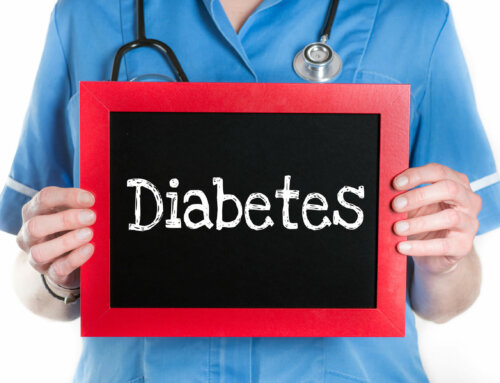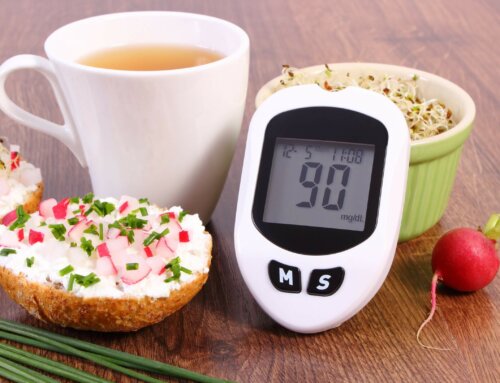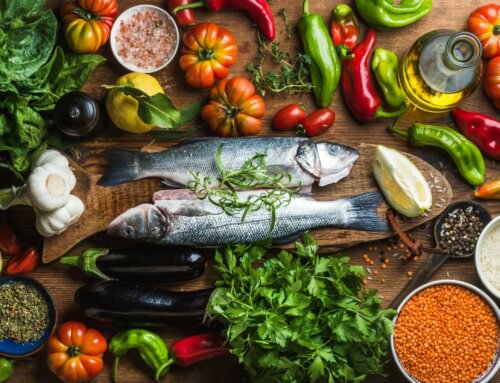The New Year has arrived and we hopefully survived the assorted gatherings, buffets and parties which may have promoted gaining a few of those unwanted pounds. Let’s explore how to deal with this situation.
I am sharing simple changes in habits with my patients to help speed up their metabolism and to hopefully encourage shedding a few pounds. I hope these suggestions may benefit you as well. Think about achieving a minimum amount of weight change this year without taking drastic measures. The important goal is to achieve better blood glucose control more than anything else!
- Be Strong – Weight training helps build muscle mass and increased muscle mass helps burn calories. The best part is the calorie burning continues for hours after you stop lifting. Strength training creates micro tears in the muscles and the body needs to repair and rebuild the muscle. It burns more protein and carbohydrates to do this repair, which burns more calories. An added bonus is strength training also builds bone mass. Try to include weights 2-3 times a week for 30 minutes after you check with your physician. Make sure you get proper education and training on the machines and/or free weights before starting a program.
- Lift, then get moving – Recent studies have shown that doing strength training prior to your aerobic exercise increases calorie burning further. Try not to rest between these specific exercises (always eat before you exercise, check your blood sugar and carry glucose tablets to prevent hypoglycemia). Walking, pool exercises, elliptical machine, line dancing, bicycle riding and aerobic classes count for your aerobics. Plan on a minimum of 30 minutes of aerobics at least 5 times a week for results (reduced food intake helps you shed some pounds and exercise helps you maintain your new weight). You can break the 30 minutes down into smaller increments if time or physical ability is a limiting factor.
- Add Spice to Your Life & Table – Recent studies have shown that eating spicy foods or adding spices can increase your metabolism by 20-25%. Think about hot sauce, hot mustard, jalapeños, curry, turmeric, red pepper flakes and cayenne pepper. The body temperature climbs – heat and calories are released (watch out if you have acid reflux, chronic heart burn or a hiatal hernia).
- Water, Water Anytime, Every time – Keeping hydrated is important since you may think you are hungry when you are really thirsty. A study at the University of Utah showed that doubling water intake from 4 glasses a day to 8 glasses a day increased resting metabolic rate (make sure you are not on fluid restrictions). Cold water seems to work even better, so throw in some ice cubes.
- Breakfast is a Daily MUST – To jump start your metabolism, eat breakfast. Without eating in the morning the body conserves calories and slows down – so feed it. Remember to “Break the Fast”! Consider 2 servings of a carbohydrate and 1-2 ounces of protein to get you going in the morning. Think low-fat cheese on a whole grain English muffin or an egg white omelet with vegetables and one slice of toast and a piece of fruit.
- Sleep – You need to sleep. Research shows that lack of sleep raises hunger and appetite. A study at Stanford University examined hormones and the amount of daily sleep. An increase of Ghrelin (hormone) is secreted with lack of sleep (5 hours or less) which induces hunger. An increase of Leptin (hormone) is secreted with proper sleep (7-8 hours) which suppress appetite. Besides, when you are not sleeping it gives you more opportunity to eat. Close down the kitchen.
- Grazing / Snacking – By eating small amounts of food through out the day you keep the engine burning and metabolic rate up. You are also less likely to over-eat later since you should not be hungry. Saving calories and carbohydrates for a large meal at the end of the day is self defeating and encourages weight gain and out of control blood sugars.
- Low-fat Dairy / Calcium – A study by the National Dairy Council found that by boosting low-fat dairy intake along with fewer daily total calories helps to shed weight more than calorie reduction alone. Of the pounds that were shed, 8% were from calorie reduction alone and that number jumped to 42% when low-fat dairy was added. Think low-fat or fat-free milk, yogurt or cheese if you can tolerate them (count them as part of your food plan – yogurt and milk counts as a carbohydrate and cheese counts as a protein if under 3 grams of fat per serving). Low-fat dairy also helps reduce Metabolic Syndrome which is common with diabetes. Metabolic syndrome includes hypertension, elevated triglycerides, reduced HDLs, increased blood sugars and abdominal obesity.
- Snack After a Workout – Wayne Westcott, PHD, of Quincy College in Massachusetts states that ‘eating a snack within 30 minutes of a workout can increase muscle mass and enhance fat loss’. Again, think protein and carbohydrate like ½ a banana with peanut butter or a small protein shake with berries (this counts as part of your daily intake).
- Downward Dog / Warrior Pose – Look for techniques that reduce your stress levels since stress promotes a hormone called cortisol which inhibits fat burning; increased cortisol production actually promotes fat deposits especially around the belly. Consider Tai Chi, Yoga, meditation or any discipline that keeps you cool and even in temperament. Even deep breathing helps calm you down.
Try getting started with these small changes and know you may have setbacks. Just keep focused and forge ahead to get your metabolism tuned up which can ultimately help your diabetes control!
NOTE: Consult your Doctor first to make sure my recommendations fit your special health needs.












Leave A Comment